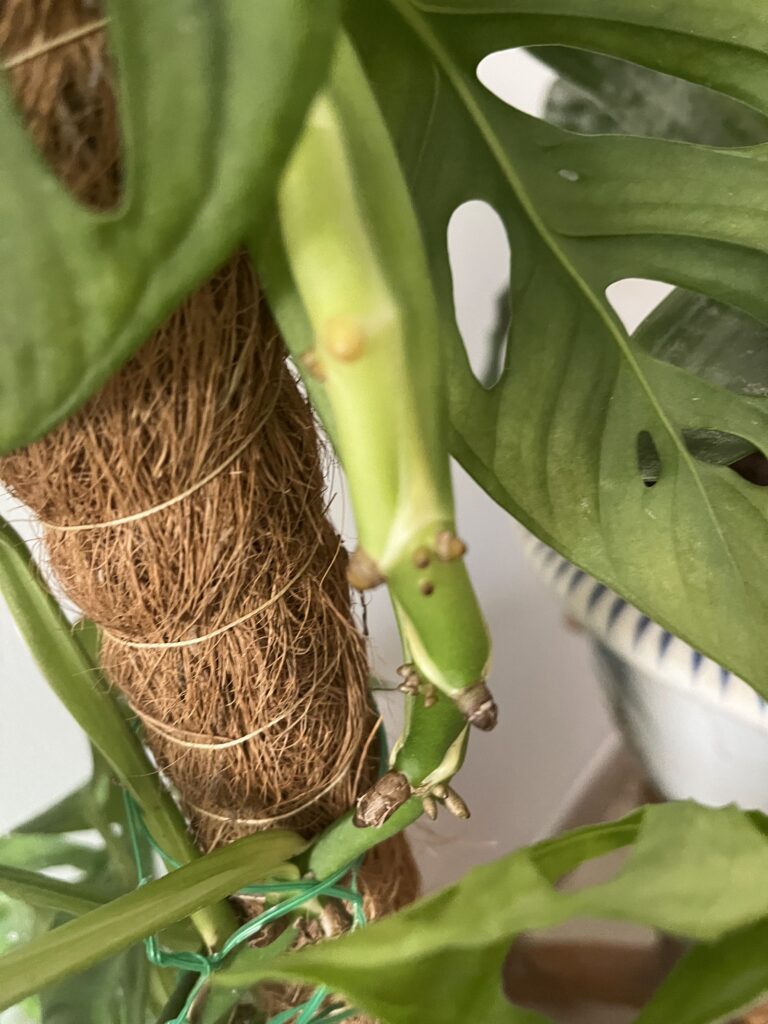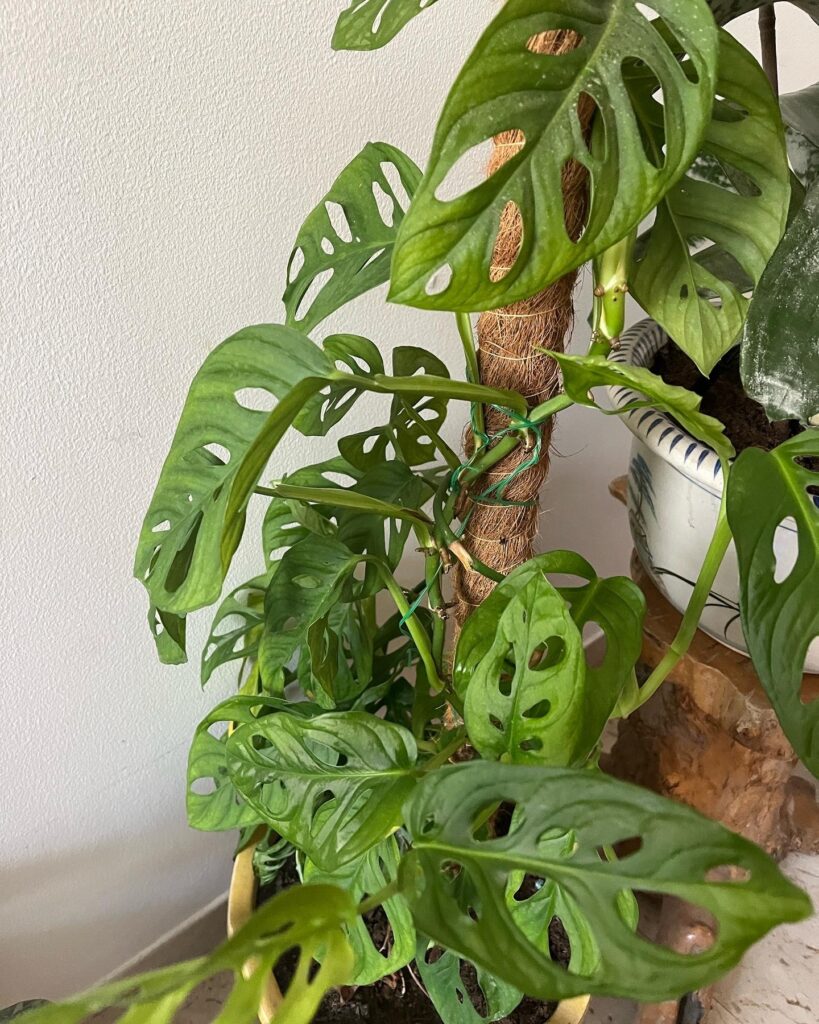The Swiss cheese plant is something I struggled with for a few years. My home is not conducive to Indoor plants as it does not have bright spaces as we tend to curtain and cover heavily in the summer and the winter sun is not bright enough. So, my indoor plants were never really great. I started with the money plant, a Peace Lily, and Schefflera and had success with those because they do ok with lower light. Then I had some success with African Violets but the Monstera was a whole different story. Three times I tried and failed and the last time I gave away the struggling plant to another plant mum. But the heart still yearned and the next time I saw a deal with a tiny four-leaved sapling I gave in and bought it.
I placed it outdoors for all of the winter months away from direct sun, and it really seemed to like that. I think the mistake I made with the others was that I did not stake it and support it soon enough. So it seemed to like the spot and grew well and as it twined up you could see the leaves becoming bigger. I have not yet propagated the plant, but it should be easy enough to do in water. I will update you with pictures when I do.

I did notice however that the plant did not like the change in spot initially as I brought my indoor plants inside starting the first week of May. Some of the mature leaves yellowed and dropped off. The plant though seemed to grow new leaves soon enough and is now happy at the indirect light that it gets. I have added the fertilizer spikes to the plant and water only when an inch and a half of the topsoil is dry. I do mist the plants occasionally and have placed about six of them together. This adds to the humidity levels that they all like. Also, do be careful not to place the plant directly in the path of the AC as this causes the leaves to droop.

A little information on the plant itself and the various types is as follows. The genus Monstera covers a number of plants including the Monstera Deliciosa which has long-lobed leaves and elongated holes (though young leaves may not have these holes). Another similar plant, Monstera Epipremnoides, looks almost identical except its leaves change from having holes to long slashes through the outer edges. And Monstera Adansonii has heart-shaped leaves with holes. They all are beautiful, and their care is pretty much the same. Although they all like some humidity they adapt well to indoor conditions, so misting is not entirely necessary for them.

Watering Tips:
I would say deep water them once until the water comes out of the bottom of the pot into the saucer below let it stay for about half an hour and then remove the excess water. After that water only when topsoil until two inches is dry. The plant does not like wet feet and struggles with over-watering. It is quite a no-nonsense plant and does not have any significant pest or disease problems.
Propagation:
Although I have not yet tried propagating the basic steps should be like this –
1. Get a sharp pair of pruning scissors, sanitize it well, and cut off a chosen stem with at least 1 node, around 3-4 leaves, and an aerial root.
2. Place this in water preferably filtered or distilled not tap water.
3. Sprinkle cinnamon powder on the cut so avoid any fungal infection on the mother plant.
4. Change the water every 3-4 days until roots develop.
5. Repot this in soil or in Pon(soilless substrate)
You can also propagate by air layering.
I use a mixture of potting soil with about 3-4 handfuls of perlite and the same of vermicompost for my indoor plants.
Come October once the temperature drops below a maximum of 34 degrees, my Monstera shall go out and enjoy the outdoors again.







Recent Comments